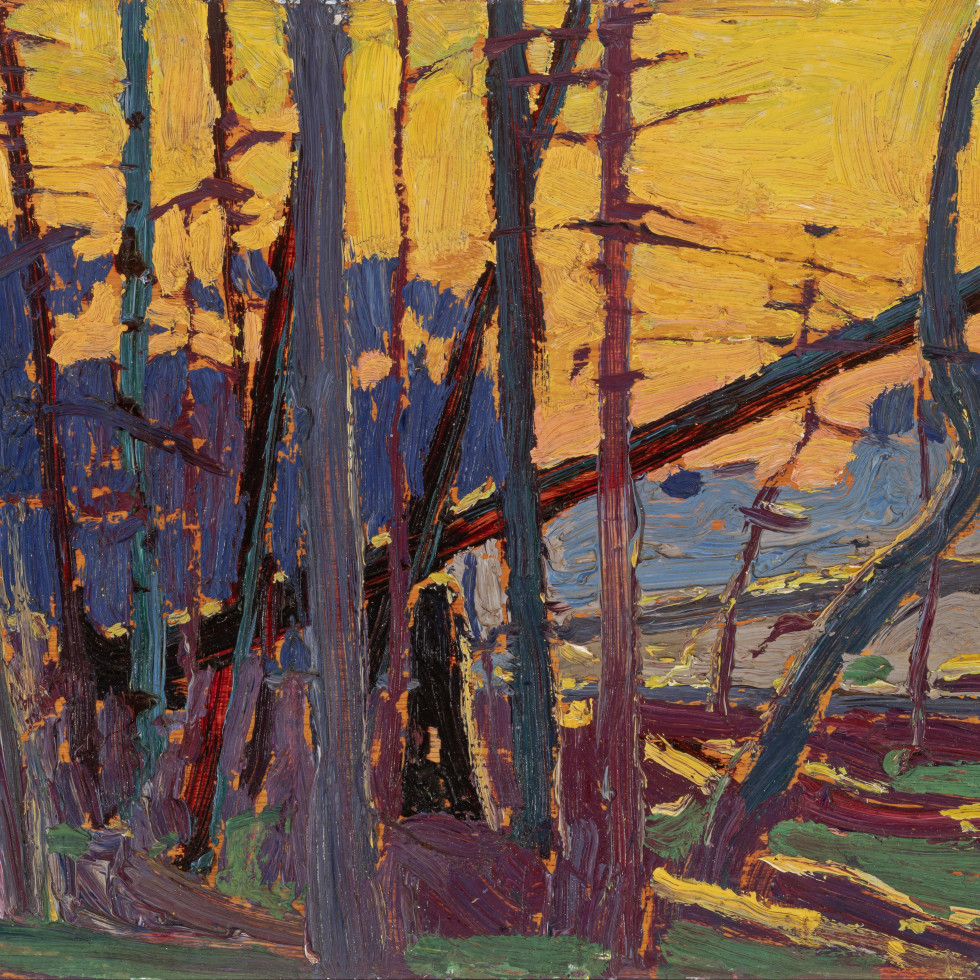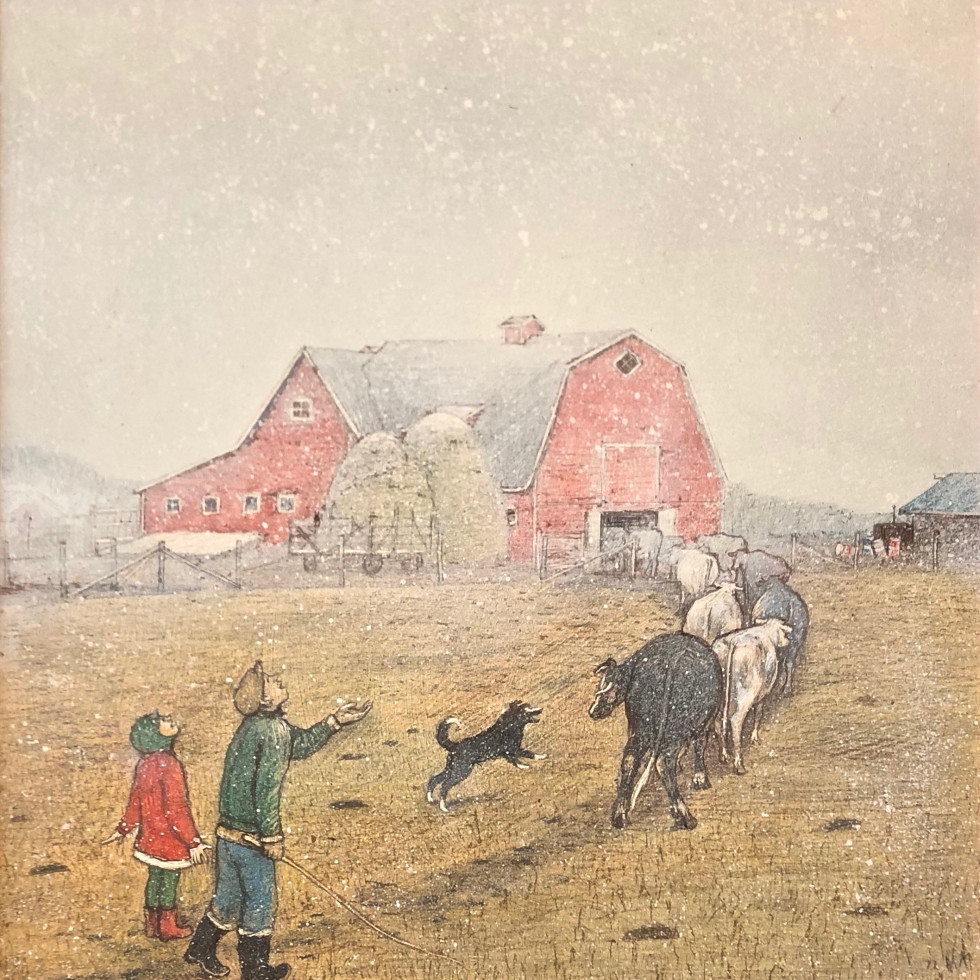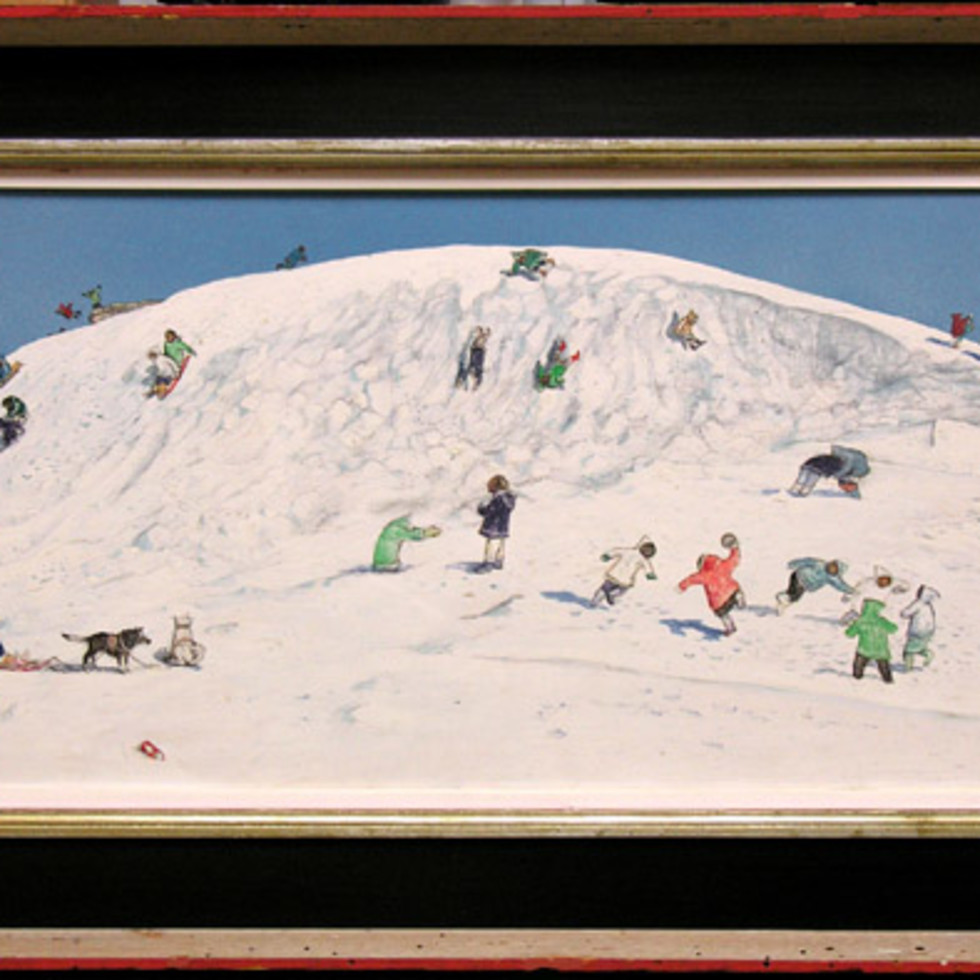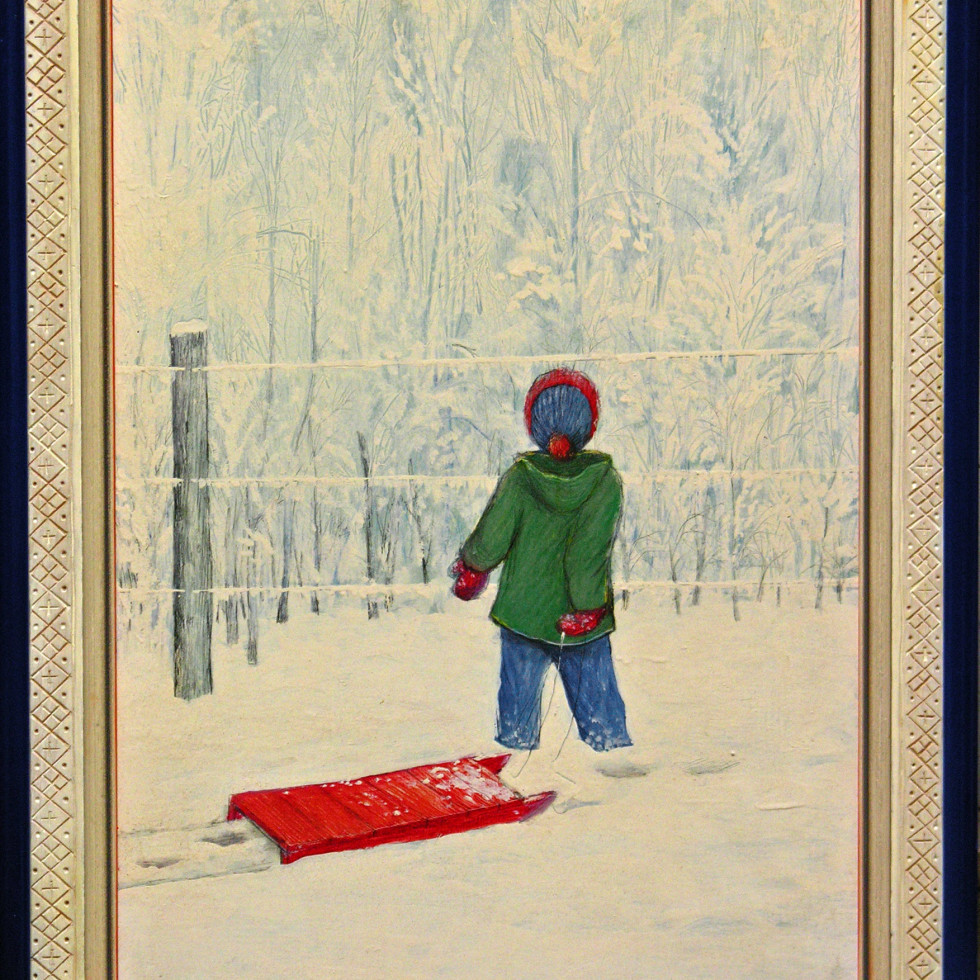William Kurelek
 "Kurelek was an outstanding artist with a unique, idealistic and pragmatic vision."
The Canadian Encyclopedia
"Kurelek was an outstanding artist with a unique, idealistic and pragmatic vision."
The Canadian Encyclopedia
Born in 1927, William Kurelek was the son of an immigrant Ukrainian peasant and his Canadian-born wife, the eldest of seven children. He grew up during the Great Depression on a grain farm in Alberta and then a dairy farm in Manitoba. His hard-working father expected him to help run the farm and thought that his son was lazy. Kurelek's lack of mechanical aptitude attracted harsh criticism from his father, as did his wish to be an artist. His father's rejection was to haunt him all of his life and caused him to be severely depressed.
Kurelek obtained a university degree and then headed to the Ontario College of Art in Toronto, where he studied briefly. For the next several years he continued to paint but supported himself by doing manual labour. At twenty-five, he resolved to go to England and from there to Europe for further study. While traveling in England he was hospitalized for over a year because of severe emotional problems, depression, and eye pain. He enrolled in the hospital's art therapy program and it was there that he drew many self-portraits and scenes of farm life from his youth. He also developed his unique style of outlining the drawing with a ballpoint pen, using colored pencils for texture and adding details in ink.
He converted to Roman Catholicism in 1957 and credited God with his healing. He then began to paint the Passion of Christ according to St Matthew, a series of 160 paintings now housed in the Niagara Falls Art Gallery and Museum.
Kurelek died in Toronto in 1977. By then he had produced over 2,000 paintings, many of which were produced to accompany children's books. For these he won several awards including the New York Times' Best Illustrated Children's Book Award for A Prairie Boy's Winter and Lumberjack, and the Canadian Association of Children's Librarians Illustrators Award for A Prairie Boy's Summer.















